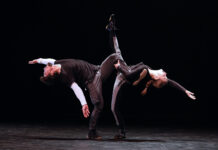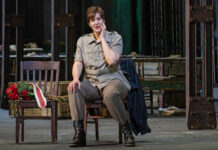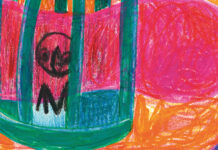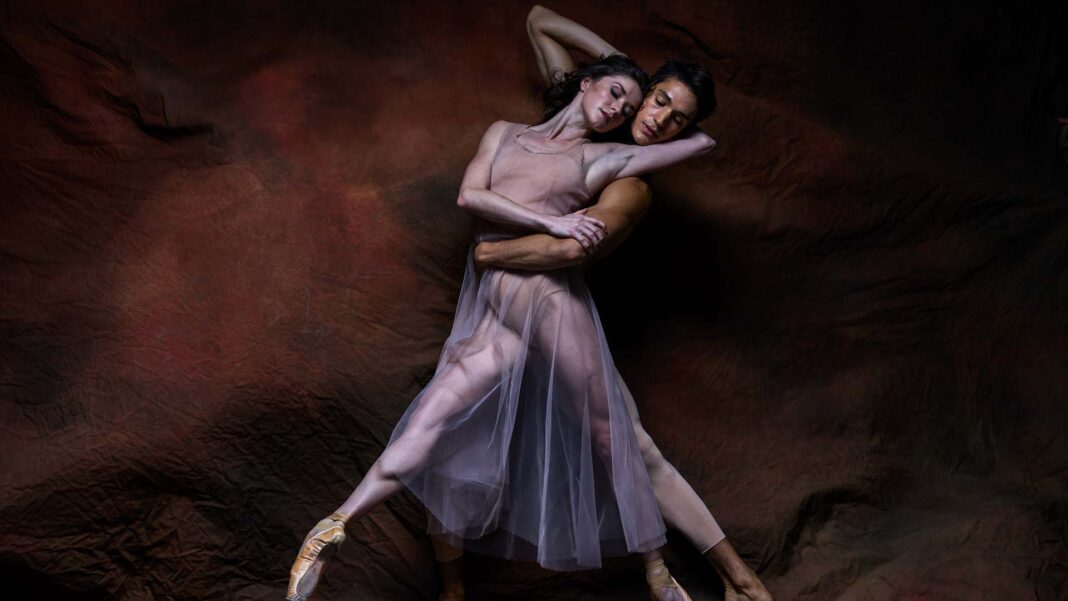
Last May it was announced that Kevin McKenzie was stepping down as Artistic Director of the American Ballet Theater. Named to replace him was a woman who was stranger to ABT. She was, after all, a dancer with the company for many years and worked with them for a total of 32 years prior to this role. So when Susan Jaffe rejoined her former home, she inherited projects that were already well underway. This includes Christopher Wheeldon’s ballet based on Laura Esquivel’s novel Like Water for Chocolate.
The ballet has its North American premiere beginning tonight at the Segerstrom Center for the Arts in Costa Mesa, California. The New York premiere will take place at ABT’s summer home, the Metropolitan Opera House, from June 22nd to July 1st.
Last week I spoke with Jaffe about Like Water for Chocolate, the challenge of adding new ballets to the repertoire and what her priorities are in her new role at ABT. What follows are excerpts from our conversation that have been edited for length and clarity. To see the full interview, please go to our YouTube channel.
Laura Esquivel, the author of Like Water for Chocolate, believes firmly that cooking is a wonderful way of telling a story. Obviously, ballet is a wonderful way of telling a story. Are there parallels between telling stories vis-á-vis cooking or vis-á-vis dance?
Yes, in a way, because it’s the passing down of traditions. It has spirituality connected to it and a lot of humanity and emotional value in both cooking and ballet.
Just to go into the ballet, the way that Chris has pulled out and magnified things within the story is astonishingly beautiful. You really get a sense of the cultural traditions in the story and in the physicalization of this story. Chris is a great storyteller. All of the acting and scenes are extremely clear in the storytelling and very exacting within the score and within the steps. He’s amplified some of the most amazing parts of the book and made this a visual celebration of parts of this story.
Water for Chocolate gives you an opportunity to reach out to people who may think Giselle and Swan Lake are relics of another era. This is something that’s going to feel more contemporary. What are your priorities and the challenges you face in attracting new audiences, but still at the same time keeping your core supporters, donors andseason ticket holders satisfied that they’re going to get the ABT they know and love?

People love the story ballets. That’s what ABT is famous for. Our Giselles, our Swan Lakes, those are very famous over years because they speak to our humanity, they speak to our light sides, our dark sides. One of the reasons why people come back to Swan Lake and Giselle is because they know them. They know the music and they want to see the artists take them through this journey.
In bringing new ballets to our public…They say in business if you’re not moving forward you’re moving backwards. It’s the same in any art form. We must progress forward with the newer choreographers of today, the [Christopher] Wheeldons, [Alexei] Ratmanskys, etc… Our technique has become so complex. Dancer’s technique, ballet technique, and a lot of it has melded with contemporary upper bodies in contemporary ballet. So we’re getting a very complex movement. I think a lot of people, especially people who know ballet very well, will look at these new works and say, “My goodness, that’s amazing!”
You spent a good portion of your career dancing with ABT and other people I know who have been with dance companies have always had their own ideas as dancers: what they wish the company could be, what they wish the company would do, the choices the company would make. Now that you’re in the position of being able to make those choices, how does your thought process today compare to the thoughts that you were having when you were a dancer?
Of course, it’s always easy from the outside to be saying I would do this and I would do that. When you get inside it, you realize it’s just not as easy as a simple decision. There are many, many factors that go into, for example, even programing. You’re working with production and you’re working with the head of touring and you’re working with your executive director and you’re working with an entire team. Then you also have to be realistic. How many new pieces can you do? What’s your budget limit? What are the limits that you can do?
I guess one of the biggest things that I’m trying to do currently – and it’s a very different world now than it was when I was a dancer – is really increasing the diversity within the company, increasing diverse voices, choreographic voices. And women. More women choreographers. That doesn’t mean that I’m not hiring male white choreographers, obviously, but when we have new opportunities, I try as much as I can to to widen our voices. I think it’s been really great for the dance world to do those things. It’s an exciting time.
You mentioned in a May 2022 interview that you did with Sarah L. Kaufman at the Washington Post when your position was announced about your desire to revisit Le Corsaire and La Bayadere. But you’ll make changes, possibly adjusting the storylines and details, after undertaking research “so that we’re really hearing from audience members.”
I don’t normally look at the comments people leave at the end of a story, but I was curious what people said. There were comments like “just what I don’t want politically correct ballet” or “I’m very leery of taking a social warrior approach to improving ballet.” How do you see the challenges you face as navigating that balancing act that accompanies revising and revisiting classic works?
Everything has to be done very thoughtfully and not [be] reactionary. With La Bayadere, which is the first one I want to work on, although that’s several years down the road, I’ve already started working with the designer and with Indian scholars and Hindu scholars. That’s just the beginning. I found out that there’s actually not that many adjustments that need to be made to La Bayadere.
We’re not going to suddenly put La Bayadere in the eighties in Las Vegas, for example. We are going to do La Bayadere with some adjustments which currently seem to be very doable and will not really make a huge change to the ballet, but will be more culturally appropriate.

As far as the people, it’s so easy to sit behind your screen on your computer and make comments like that. But I don’t really pay much attention to it because they’re not inside it. I feel very responsible for what we put out on stage and also responsible to the art form. I am a traditionalist and I want to preserve the traditions of ballet while not misappropriating, while not insulting, but also preserving. That is who I am. That’s who I always will be. I’m not going to turn the whole world upside down and suddenly everything’s going to be completely changed. But it will be adjusted.
Do you find that the labels that we used to traditionally identify things are maybe falling a bit by the wayside? Is there a dissolving a little bit of what the term ballet means?
It depends upon what people think traditional ballet is. What I consider to be ballet is when it is balletically-based. So Like Water for Chocolate is balletically-based contemporary movement. We’re not talking about contemporary dance, but it has a contemporary feeling to it, but the legs are classical in their execution. For me, it’s the technique of ballet that that makes something what I would consider to be classical ballet. Maybe not classical, but ballet.
You’re a strong proponent of meditation. I want to ask you about something that T.S. Eliot wrote. “I said to my soul, be still and wait without hope for hope would be hope for the wrong thing. Wait without love for love would be love for the wrong thing. There is yet faith, but the faith and the love are all in the waiting. Wait without a thought for you are not ready for thought. So the darkness shall be the light and the stillness, the dancing.”
Where do you find dancing in the stillness and how important will it be for you to find that as you navigate your way through your time as Artistic Director of ABT?
The stillness and the dancing. Well, you’re tying that to dancing ballet. I was thinking that it was dancing of the soul.
They both work for the question.

They both work for the question. Good ballet, just like any good art, comes not from the technical execution of it, but the transformation of that technical execution into depth, authenticity, beauty, humanity. That’s what makes ballet or any art form really difficult. But you can’t access your authenticity if you don’t know who you are. For me, an artist’s responsibility is to not only know who they are from the depths of silence, but then be looking out.
When you’re meditating you really get to experience compassion towards humanity and for all our failures. We are a bunch of failures, failing up, sometimes failing down, but usually failing up even if it doesn’t look like that.
When you’re sitting in an audience and you feel, sense and experience those artists that are in the flow; being danced by a much higher energy. But from deep within is the real part. That’s a dancer’s journey. You can’t do anything on the surface because you will not move your audience and you will not move yourself. From the depths is where it’s the origin of the emotional force of dancing.
And is it from those same depths that you have to rely to guide your way as artistic director?
100%. Because I’m in charge of all these people. I take that very seriously and I want everybody to grow. You still have to be honest. You still have to make sure that that everybody is growing, but also understanding where they need to grow. I think it’s a delicate art. Leading people is not for the faint of heart. It is a huge responsibility. And not only leading people, but also leading us into our new artistic vision and endeavors for our audience. So I take that very seriously and hopefully now I’m not taking myself too seriously because that would be tragedy. But yes, I do believe that deep thought and responsibility goes into these kinds of jobs.
To watch the full interview with Susan Jaffe, please go here.
Main Photo: Cassandra Trenary and Daniel Carmago in Like Water for Chocolate (Photo by Fabrizio Ferri/Courtesy Segerstrom Center for the Arts)











